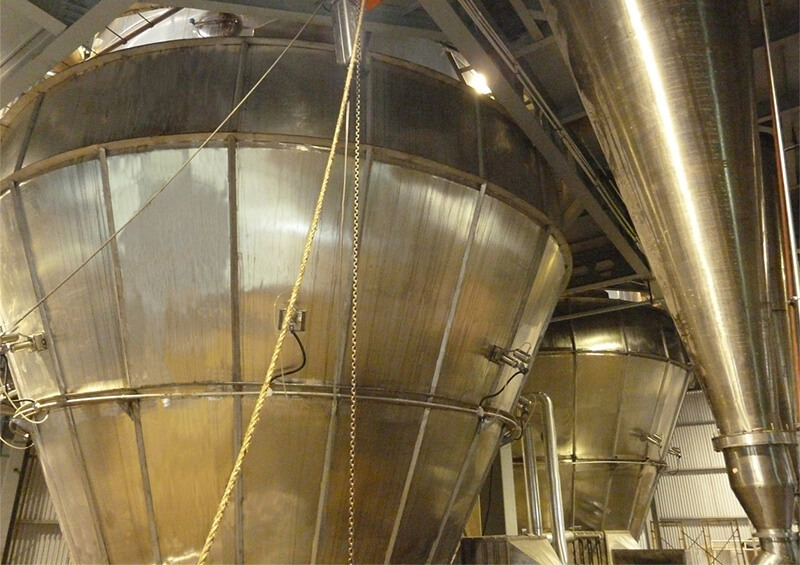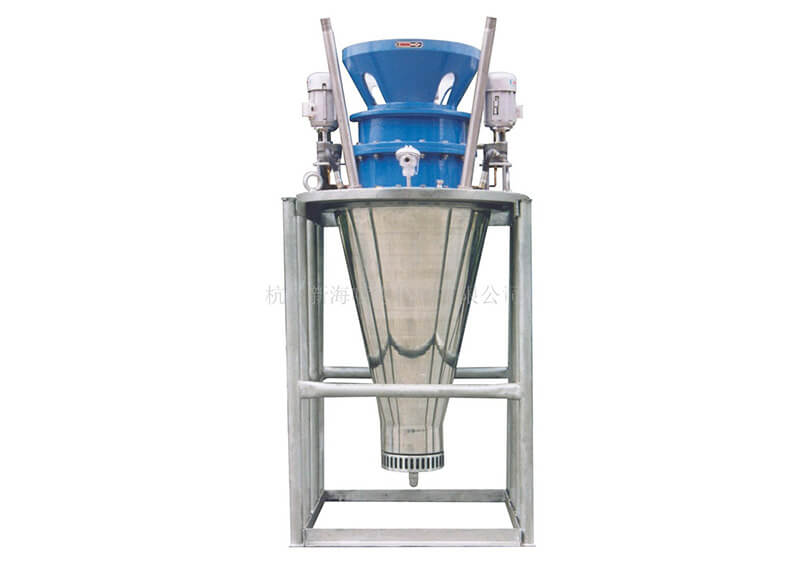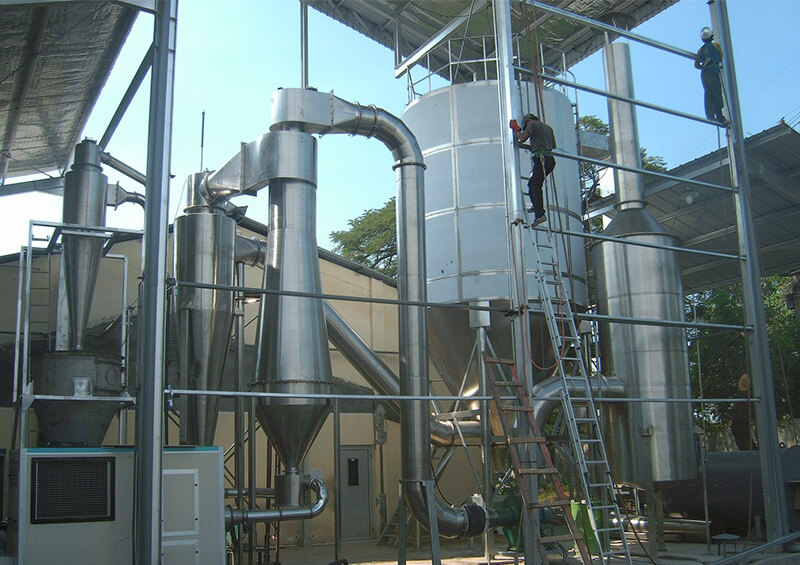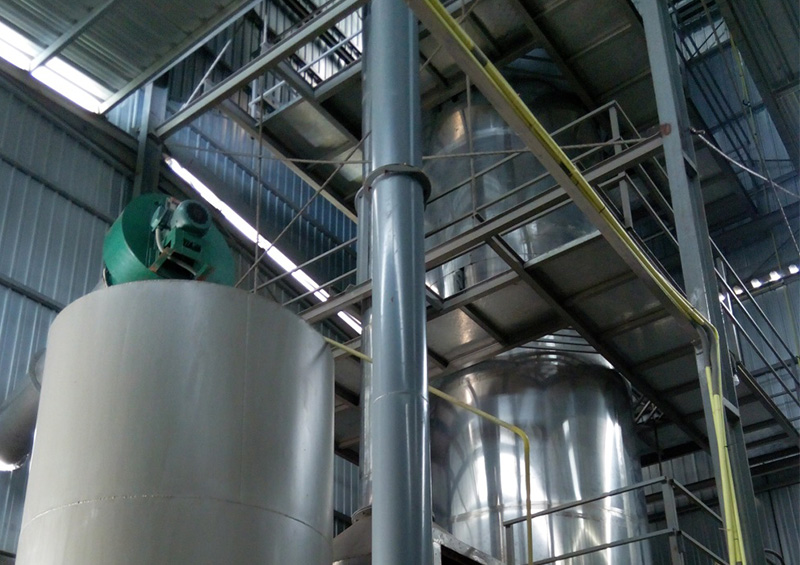Processing Flow of Instant Coffee Production Line
 Oct 11, 2019|
Oct 11, 2019| View:2277
View:2277Processing Flow of Instant Coffee Production Line
As one of the three major beverage sources in the world, coffee beans originated in Africa are gradually moving to every corner of the world. Due to the relatively complex processing process, it requires relatively reasonable technology and equipment support in industrial production.
Coffee is the fruit of the coffee tree of Rubiaceae shrubs. It removes the bean-like seeds of the pulp and is fried and crushed to make coffee. It has a brown appearance and special aroma of the coffee, but it is troublesome to drink. This requires scientific and reasonable technology to support the commercial development of coffee. Production Control of Instant Coffee.

1. The production process of the instant coffee production line
Choose clean coffee beans to bake, grind, extract, concentrate and evaporate, modulate liquid drinks, spray dry powder, packaging, etc.
Operational Control Points of Instant Coffee Production Line
1: The pretreatment of raw coffee beans in the instant coffee production line should first select the raw materials, that is, coffee beans should have a fresh taste, bright color, complete and uniform granules, less broken beans and impurities, and no mildew spots. At the same time, raw beans should be screened and cleaned. In order to ensure quality, vibration screen, air pressure conveying or vacuum conveying can be used to separate and clean.
2: Baking: Baking is the decision process to form the flavor and quality of the instant coffee production line. The rotary roaster is commonly used. Baking temperature and time are the key control factors. When the coffee beans reach the required roasting degree, turn off the fire, stop heating, and spray a certain amount of cold water into the oven. The roasted coffee beans are discharged from the oven. The ground roasted coffee beans are stored for one day to further volatilize and release the carbon dioxide and other gases produced during the roasting process. At the same time, the coffee beans fully absorb the moisture in the air to make the seeds. Granules soften, which is conducive to extraction. The average diameter of ground coffee particles is about 1.5mm.
3: Extraction: Extraction is the most complex central part of the process of instant coffee production. Temperature and pressure are the two most direct parameters in the process of extraction, of which temperature is the decisive factor. If the acid taste, bitterness, and astringency of the product are found to be too heavy, which indicates that the extraction rate is on the high side, then the extraction amount will be reduced in the next run-time. In turn, the extraction amount can be increased appropriately, so as to ensure the product quality and improve the output.
4: for liquid-solid separation, there will be a lot of solids left in the extracted coffee liquid, which requires the liquid-solid separation of the coffee liquid before being transported to the next process. Generally, the butterfly separator can achieve the required separation effect.
5: Concentration: Concentration is generally divided into vacuum concentration, centrifugal concentration and freezing (concentration), where vacuum concentration is used. It reduces the boiling point of water by vacuum, and the vacuum degree is above - 0.08 Mpa. At this time, the boiling point of water is only about 60 degrees, so that the liquid concentration is accelerated, and the concentration of concentrated liquid is generally not more than 60% (refractometer). Since the temperature of the concentrated liquid from the evaporation tower is higher than normal temperature, it must be cooled and then fed into the storage tank to reduce the loss.
6: spray drying: spray drying is the process of forming a coffee powder, and the mixture of concentrated liquid and aromatic liquid is mixed into a mixture of coffee liquid), and the coffee liquid is directly conveyed to the nozzle of the tower through the pressure pump. The inlet temperature of the drying tower is controlled at 250-270 degrees, the outlet temperature is controlled between 110-130 degrees, and the nozzle and spray pressure is adjusted to make the coffee powder into a hollow spherical particle with a thick wall. The specific gravity is controlled at 220-250g/L, and the moisture content is about 3%. In spray drying, we should pay attention to the concentration of the coffee solution, because the higher the concentration of the solution, the higher the viscosity and the greater the surface tension. This is conducive to the formation of thick hollow particles, and at the same time can reduce the amplitude of the adjustment of the transportation parameters and temperature and pressure. But the higher the concentration is, the better the concentration is. The concentration is too high, which makes the atomization degree too low, resulting in poor atomization, so the concentration of coffee (mixture) is strong. The degree should be controlled between 30-40%.
7: After the concentrate is processed, the concentrate can be added and processed as necessary. It can also be developed into a liquid beverage. For example, Hough coffee in Yunnan Province has successfully developed an Italian-flavored coffee beverage. A good market reaction can be achieved only by adding a filling system.

 CN
CN



